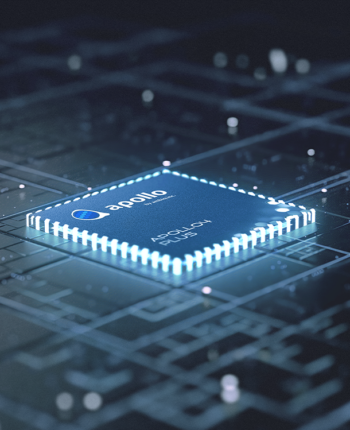The 5-Second Trick For Ambiq apollo3 blue
The 5-Second Trick For Ambiq apollo3 blue
Blog Article

On top of that, Us citizens toss virtually three hundred,000 tons of procuring bags away Every single year5. These can afterwards wrap within the parts of a sorting machine and endanger the human sorters tasked with getting rid of them.
Allow’s make this more concrete having an example. Suppose We now have some big selection of visuals, such as the one.2 million visuals during the ImageNet dataset (but Remember the fact that This might inevitably be a big selection of photos or films from the world wide web or robots).
The TrashBot, by Clean Robotics, is a smart “recycling bin of the long run” that types waste at the point of disposal though supplying Perception into proper recycling for the consumer7.
Automation Wonder: Photo yourself using an assistant who by no means sleeps, in no way requirements a espresso break and works spherical-the-clock without having complaining.
GANs currently make the sharpest images but They can be more challenging to optimize resulting from unstable coaching dynamics. PixelRNNs Use a quite simple and stable teaching process (softmax reduction) and at this time give the best log likelihoods (that is certainly, plausibility of your generated info). On the other hand, they are comparatively inefficient through sampling and don’t conveniently supply uncomplicated small-dimensional codes
The following-technology Apollo pairs vector acceleration with unmatched power effectiveness to enable most AI inferencing on-product with no devoted NPU
Our website uses cookies Our website use cookies. By continuing navigating, we presume your permission to deploy cookies as specific inside our Privateness Coverage.
One of several widely applied types of AI is supervised learning. They contain teaching labeled knowledge to AI models so that they can forecast or classify matters.
The new Apollo510 MCU is at the same time the most Electricity-productive and highest-general performance merchandise we've at any time produced."
Our website makes use of cookies Our website use cookies. By continuing navigating, we think your permission to deploy cookies as specific in our Privateness Policy.
We’re sharing our investigate progress early to start working with and receiving feed-back from men and women beyond OpenAI and to offer the public a way of what AI abilities are around the horizon.
You signed in with An additional tab or window. Reload to refresh your session. You signed out in A further tab or window. Reload to refresh your session. You switched accounts on Yet another tab or window. Reload to refresh your session.
You've got talked to an NLP model For those who have chatted that has a chatbot or experienced an vehicle-recommendation when typing some email. Understanding and generating human language is done by magicians like conversational AI models. They may be digital language partners to suit your needs.
By unifying how we signify data, we can easily educate diffusion transformers on the wider number of Visible info than was Ambiq apollo 3 feasible right before, spanning unique durations, resolutions and facet ratios.
Accelerating the Development of Optimized AI Features with Ambiq’s neuralSPOT
Ambiq’s neuralSPOT® is an open-source AI developer-focused SDK designed for our latest Apollo4 Plus system-on-chip (SoC) family. neuralSPOT provides an on-ramp to the rapid development of AI features for our customers’ AI applications and products. Included with neuralSPOT are Ambiq-optimized libraries, tools, and examples to help jumpstart AI-focused applications.
UNDERSTANDING NEURALSPOT VIA THE BASIC TENSORFLOW EXAMPLE
Often, the best way to ramp up on a new software library is through a comprehensive example – this is why neuralSPOt includes basic_tf_stub, an illustrative example that leverages many of neuralSPOT’s features.
In this article, we walk through the example block-by-block, using it as a guide to building AI features using neuralSPOT.
Ambiq's Vice President of Artificial Intelligence, Carlos Morales, went on CNBC Street Signs Asia to discuss the power consumption of AI and trends in endpoint devices.
Since 2010, Ambiq has been a leader in ultra-low power semiconductors that enable endpoint devices with more data-driven and AI-capable features while dropping the energy requirements up to 10X lower. They do this with the patented Subthreshold Power Optimized Technology (SPOT ®) platform.
Computer inferencing is complex, and for endpoint AI to become practical, these devices have to drop from megawatts of power to microwatts. This is where Ambiq has the power to change industries such as healthcare, agriculture, and Industrial IoT.
Ambiq Designs Low-Power for Next Gen Endpoint Devices
Ambiq’s VP of Architecture and Product Planning, Dan Cermak, joins the ipXchange team at CES to discuss how manufacturers can improve their products with ultra-low power. As technology becomes more sophisticated, energy consumption continues to grow. Here Dan outlines how Ambiq stays ahead of the curve by planning for energy requirements 5 years in Wearable technology advance.
Ambiq’s VP of Architecture and Product Planning at Embedded World 2024
Ambiq specializes in ultra-low-power SoC's designed to make intelligent battery-powered endpoint solutions a reality. These days, just about every endpoint device incorporates AI features, including anomaly detection, speech-driven user interfaces, audio event detection and classification, and health monitoring.
Ambiq's ultra low power, high-performance platforms are ideal for implementing this class of AI features, and we at Ambiq are dedicated to making implementation as easy as possible by offering open-source developer-centric toolkits, software libraries, and reference models to accelerate AI feature development.
NEURALSPOT - BECAUSE AI IS HARD ENOUGH
neuralSPOT is an AI developer-focused SDK in the true sense of the word: it includes everything you need to get your AI model onto Ambiq’s platform. You’ll find libraries for talking to sensors, managing SoC peripherals, and controlling power and memory configurations, along with tools for easily debugging your model from your laptop or PC, and examples that tie it all together.
Facebook | Linkedin | Twitter | YouTube